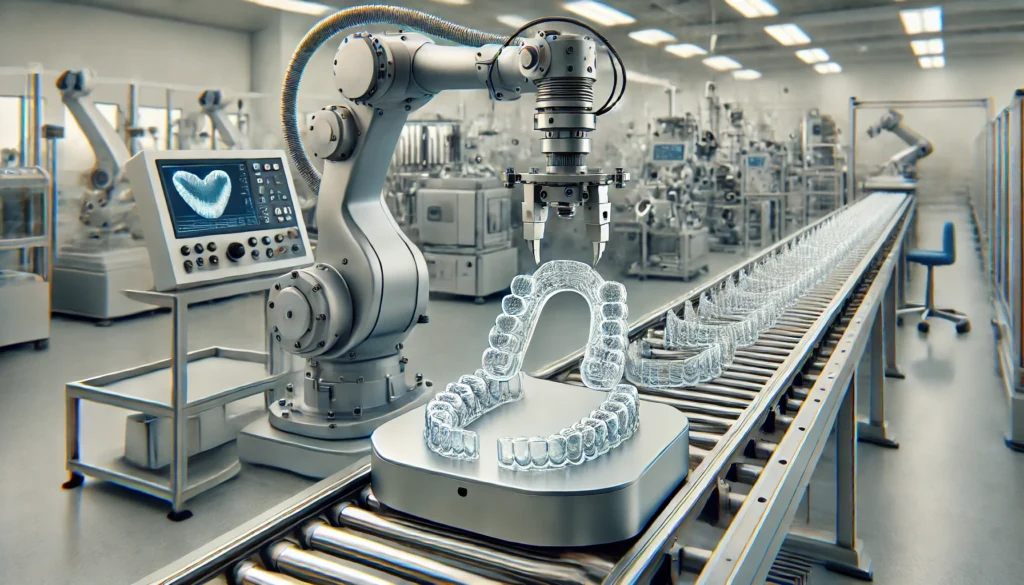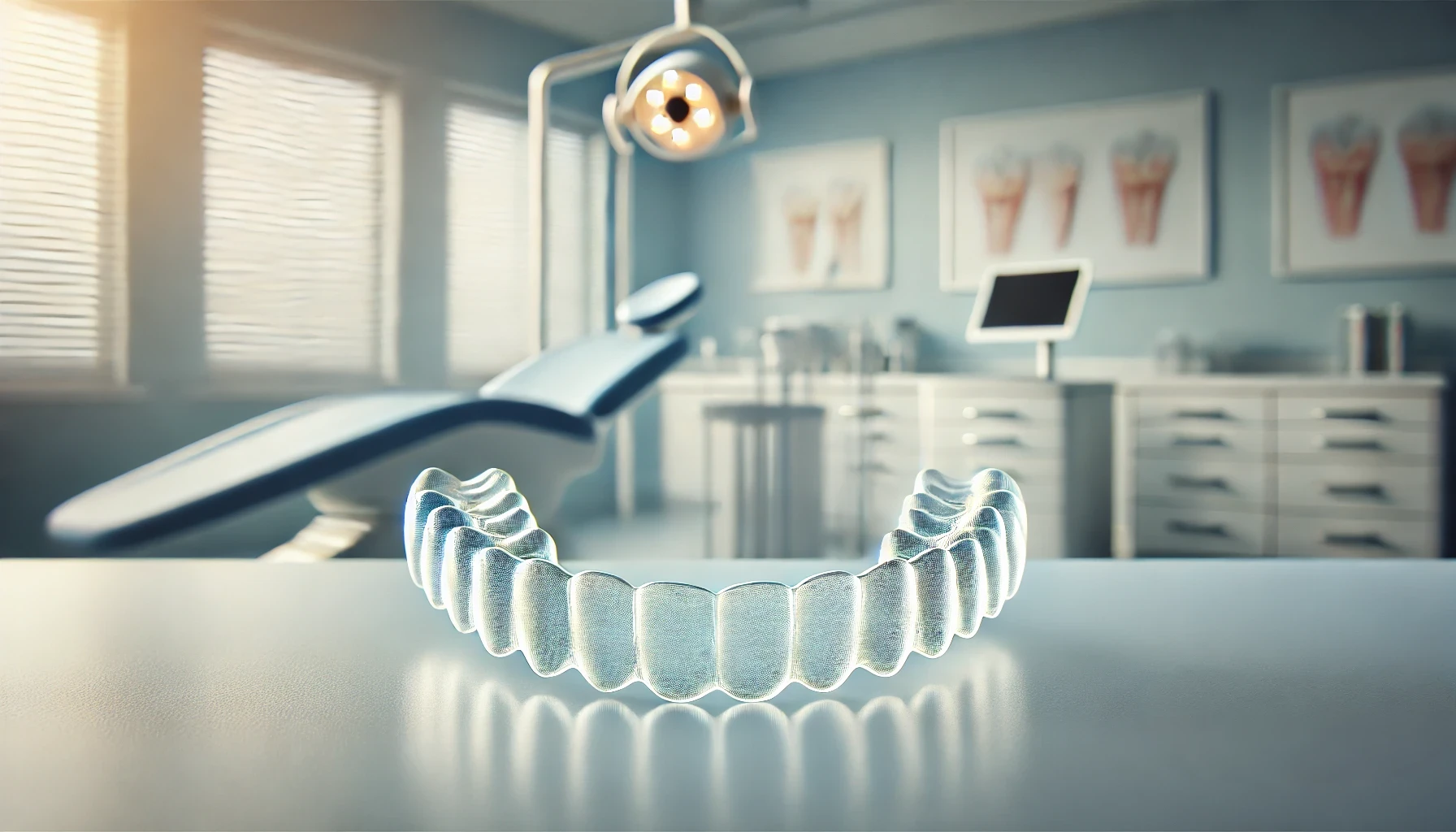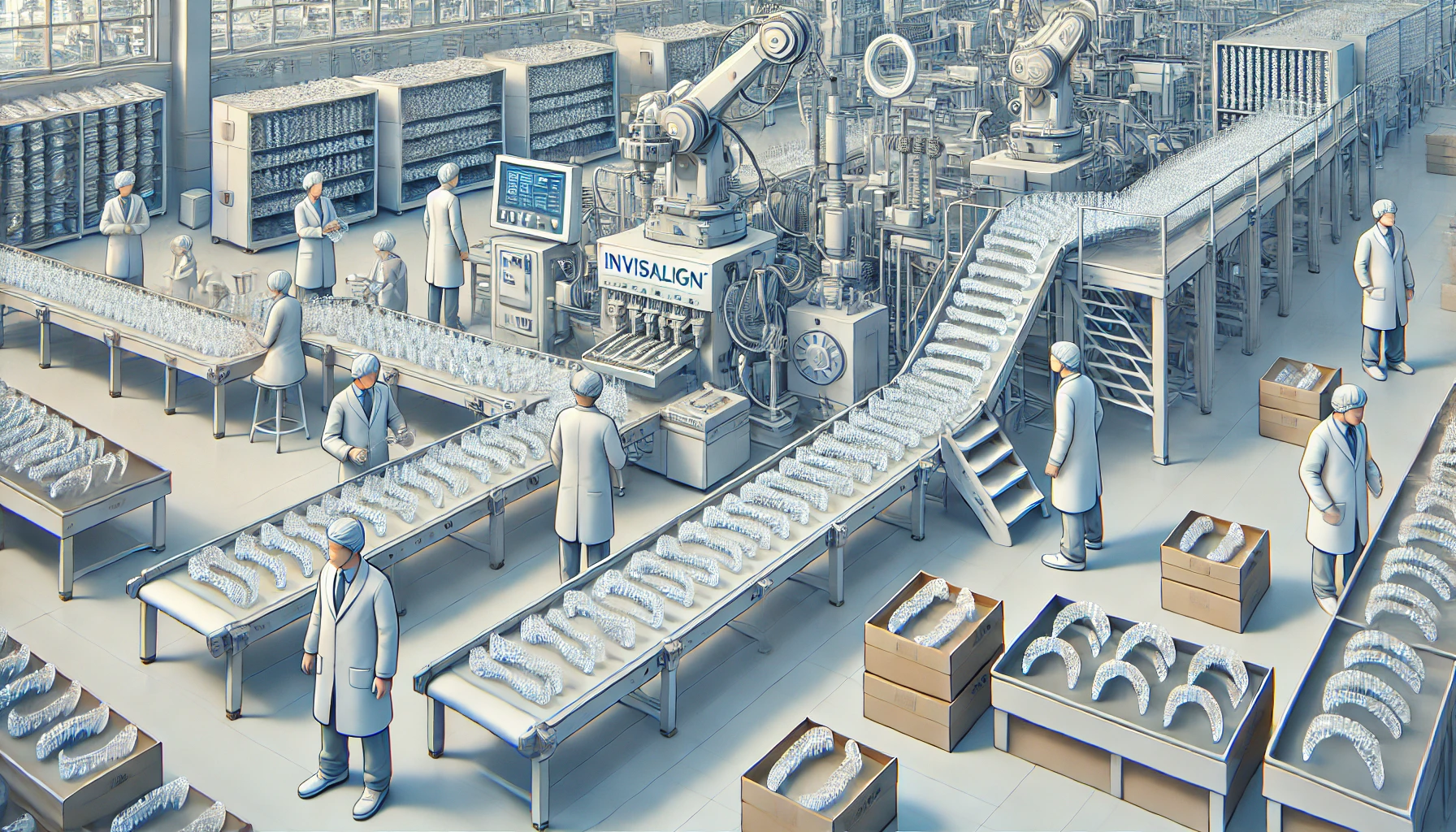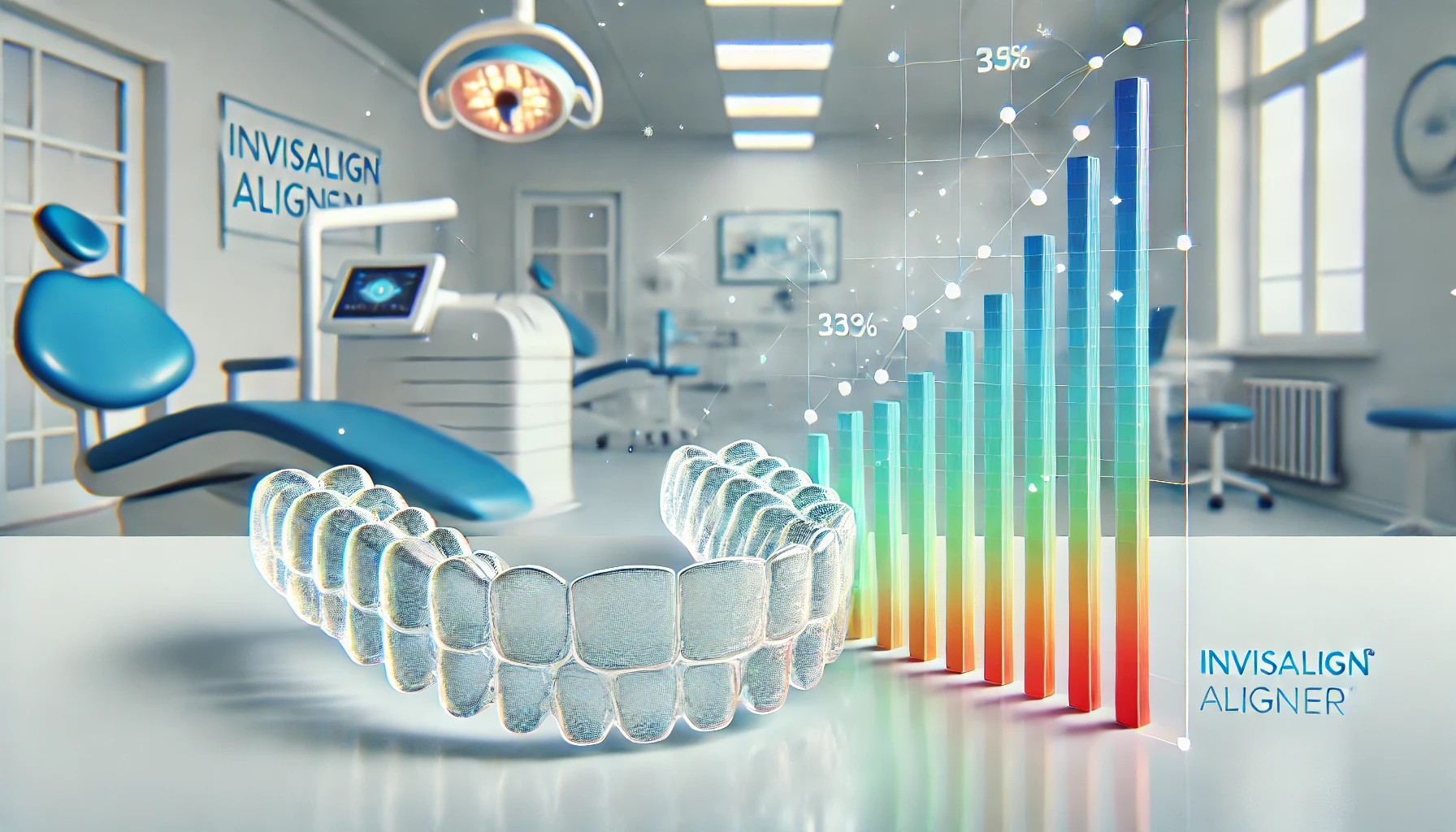
Clear aligners have transformed the field of orthodontics, providing a discreet and convenient alternative to traditional metal braces. This article delves into the details of clear aligners, examining how clear aligners are made, the materials used, and the advanced technology that improves their effectiveness.
We will consider the advantages and disadvantages, offering insights into their appropriateness for various cases. Furthermore, we will explore future advancements in clear aligner technology. Join us as we uncover the intriguing world behind these innovative dental solutions.
What Are Clear Aligners?

Clear aligners represent a modern approach to orthodontics, designed to gradually shift teeth into their optimal positions. They offer a more aesthetically pleasing and comfortable alternative to traditional braces.
Understanding how Invisalign works can provide insight into the broader category of clear aligners, as Invisalign uses a series of custom-made, removable trays to gently move teeth into alignment over time.
By utilising advanced aligner technology, these dental appliances are tailored to meet the specific needs of each patient, enabling better smile design and enhancing overall comfort throughout the treatment process. Crafted from durable thermoplastic materials, clear aligners provide a discreet and effective solution for individuals looking to improve their bite alignment and achieve a beautiful smile transformation.
How Are Clear Aligners Made?
The manufacturing process of clear aligners is a sophisticated combination of advanced technology and precision craftsmanship. It begins with detailed dental impressions or digital scans that accurately capture the unique contours of a patient’s teeth.
After the initial data is gathered, orthodontists utilise specialised software to develop a treatment plan. This plan is then transformed into a series of aligners using 3D printing technology, enabling the custom fabrication needed to address the specific requirements of each patient.
What Materials Are Used to Make Clear Aligners?
Clear aligners are primarily crafted from advanced thermoplastic materials that are specifically designed to offer both comfort and effectiveness in orthodontic treatment. These materials, known for their biocompatibility, are carefully selected to ensure that the aligners fit snugly against the teeth, allowing for necessary movement without compromising oral health or causing any discomfort.
The unique characteristics of these thermoplastics, such as their durability and flexibility, significantly enhance the overall experience for patients. They maintain their structure under pressure, ensuring that consistent force is applied to the teeth to promote optimal alignment.
Furthermore, the smooth surface of these materials reduces irritation to the gums and soft tissues, making it comfortable for individuals to wear the aligners throughout the treatment period. Since these thermoplastics are resistant to staining and wear, they also help maintain aesthetic appeal, which is especially important for patients concerned about their appearance during orthodontic procedures.
The innovative application of these materials greatly contributes to the comfort and effectiveness of clear aligners, making them an increasingly popular choice in modern orthodontics.
What Is the Process of Making Clear Aligners?
The process of creating clear aligners begins with a detailed treatment planning phase, which employs a digital workflow and CAD/CAM technology to develop precise aligner designs tailored to the patient’s unique dental structure. After this phase, each aligner in the series is meticulously crafted to ensure that the design promotes effective tooth repositioning while applying the necessary orthodontic forces for successful treatment outcomes.
This careful approach continues with advanced digital scans that capture detailed impressions of the teeth, enabling orthodontists to visualise the patient’s dental layout and identify potential adjustments.
Once the initial scan is completed, the design phase utilises computer-aided design programmes to customise the aligners for each individual, optimising both fit and comfort.
After the aligners are fabricated, careful adjustments may be required to enhance their effectiveness, ensuring they fit well and apply consistent pressure to move the teeth as intended. The accuracy of this production process is vital, as even minor discrepancies can impact the course of treatment, underscoring the importance of precision in delivering high-quality orthodontic care.
What Are the Advantages of Clear Aligners?

Clear aligners present a variety of benefits that contribute to their growing popularity as a choice for orthodontic treatment. Their discreet appearance and exceptional comfort for patients are particularly noteworthy.
Unlike traditional braces, clear aligners can be removed, which allows individuals to enjoy their favourite foods and maintain excellent oral hygiene without the constraints associated with fixed dental appliances.
Additionally, the customisation options available with clear aligners ensure that each treatment plan is specifically tailored to meet individual needs, ultimately promoting higher levels of patient compliance and satisfaction.
1. Discreet Appearance
One of the most notable benefits of clear aligners is their discreet appearance, which allows individuals to straighten their teeth without the obvious look of traditional braces. This characteristic of invisible orthodontics is particularly appealing to both adults and teenagers, as clear braces integrate smoothly into daily life, providing a more comfortable treatment experience.
This subtlety helps patients feel more relaxed in social situations, reducing anxiety about their appearance. With clear aligners, they can maintain a natural smile, boosting their self-confidence when communicating or interacting with others. Patients can confidently engage in conversations, take photos, and participate in public events without the self-consciousness that often comes with visible metal braces.
As a result, opting for clear aligners not only promotes effective dental realignment but also significantly enhances a person’s aesthetic confidence, enableing them throughout the entire orthodontic journey.
2. Removable for Eating and Brushing
Clear aligners are thoughtfully designed to be removable, allowing patients the flexibility to take them out while eating or brushing their teeth. This feature not only enhances patient comfort but also supports better oral health by eliminating the difficulties associated with maintaining hygiene around fixed braces.
With removable aligners, individuals can savour their favourite foods without limitations, avoiding the common hassles of traditional braces, such as food particles getting trapped.
In terms of dental hygiene, being able to remove aligners greatly simplifies the process of brushing and flossing effectively, which in turn reduces the risk of cavities and gum disease.
This practicality not only fosters a positive treatment experience but also contributes to overall well-being, making the journey to a straighter smile more enjoyable and less stressful.
3. Customised for Each Patient
The customisation of clear aligners is a significant advantage, as each set is specifically designed to meet the individual needs of the patient throughout their journey to achieving optimal smile alignment. This personalised approach allows for precise control over tooth movement and supports the overall treatment goals established by the orthodontist.
By utilising advanced technology and conducting thorough assessments, orthodontists are able to create tailored treatment plans that not only enhance patient comfort but also improve the efficiency of the process. This level of personalised care ensures that adjustments can be made in response to the patient’s progress, ultimately leading to better treatment outcomes.
As patients progress through their orthodontic journey, the importance of this customisation becomes evident. It provides them with a sense of ownership over their care and ensures that each patient’s unique dental structure is carefully considered.
Consequently, this bespoke strategy not only fosters a more satisfying experience but also paves the way for impressive, long-lasting results.
What Are the Disadvantages of Clear Aligners?

While clear aligners present a variety of advantages, it is important for potential users to consider some of the associated disadvantages.
One key challenge is patient compliance, as consistent wear is essential for the treatment to be effective. Additionally, clear aligners may have limitations when it comes to addressing complex orthodontic cases that might require more advanced techniques.
1. May Not Be Suitable for Complex Cases
Clear aligners may not be the best choice for complex orthodontic cases that require significant tooth movement or intricate bite corrections. In these instances, traditional braces or other orthodontic methods could be more effective in achieving the desired treatment outcomes.
This is especially relevant for issues such as severe crowding, large gaps between teeth, or malocclusions that require precise adjustments to jaw positioning. Unlike braces, which deliver consistent and precise force to the teeth, clear aligners can struggle to manage the complexities of tooth movement effectively.
Additionally, some patients may face limitations due to the aligners’ reliance on wear time and compliance. If the aligners are not worn as directed, their effectiveness can decrease significantly. Therefore, individuals facing complex orthodontic challenges should consult with a knowledgeable orthodontist to explore the most suitable treatment options tailored to their specific needs.
2. Requires Discipline to Wear Them Consistently
For clear aligners to be truly effective, it is essential for patients to consistently wear them for at least 20 to 22 hours a day. Not adhering to this guideline can lead to a longer treatment duration and may compromise the overall success of their orthodontic care.
When wear is inconsistent, various complications can arise. Teeth may shift back to their original positions, which not only delays progress but may also require additional orthodontic procedures. This inconsistency can disrupt the expected timeline for achieving the desired smile and may lead to increased an cost of Invisalign and frustration for the patient.
Moreover, when clear aligners are not worn as prescribed, the chances of needing refinements or additional sets of aligners increase, which ultimately extends the treatment period. Therefore, it is crucial for patients to understand the importance of compliance with aligner wear to ensure an effective and timely orthodontic solution.
3. May Cause Temporary Discomfort
At the outset, patients may experience some temporary discomfort when they begin using a new set of clear aligners. This occurs because the aligners apply gentle pressure on the teeth to gradually shift them into the desired positions. Typically, this sensation is mild and tends to fade as the patient becomes accustomed to wearing the aligners over time.
During this initial phase, the discomfort may feel like tightness or pressure in the mouth, which is a normal aspect of the adjustment process. As individuals adapt to the aligners, their bodies will start to adjust, and any discomfort should significantly decrease.
It is important to understand that each movement of the teeth requires a series of aligner changes, which are essential for achieving the desired alignment. Regular check-ups with the orthodontist help ensure that the treatment proceeds as planned, making these adjustments crucial for optimising both comfort and effectiveness throughout the treatment journey.
How Does Technology Play a Role in Making Clear Aligners?

Technology is essential in the production and effectiveness of clear aligners, fundamentally transforming how orthodontic treatment is planned and carried out.
For instance, digital scanning techniques now capture precise dental impressions, while 3D printing technology is used to create the aligners.
Furthermore, advancements in CAD/CAM technology and orthodontic software have greatly enhanced the accuracy and efficiency of the entire process.
1. Digital Scanning and 3D Printing
Digital scanning technology has significantly changed the landscape of dental imaging, enabling the accurate and efficient capture of patients’ dental impressions. This data is then used alongside 3D printing to create clear aligners that are specifically tailored to each patient’s needs, ensuring a precise fit and effective orthodontic treatment.
By eliminating the need for traditional moulds, digital scanning improves both comfort and speed, greatly enhancing the patient experience. Once the scans are completed, the data is effortlessly transformed into a digital model that can be adjusted for optimal alignment results.
When paired with advanced 3D printing techniques, this process not only speeds up production timelines but also guarantees that each clear aligner is uniquely fitted, minimising the number of adjustments required throughout treatment.
The combination of these technologies not only enhances precision but also supports a modern approach to orthodontics, making it more accessible and efficient for both practitioners and patients.
2. Computer-Aided Design (CAD)
Computer-Aided Design (CAD) plays a crucial role in the creation of clear aligners, enabling orthodontists to design customised aligners based on data gathered from digital scans. This advanced orthodontic software facilitates precise treatment planning and allows for the simulation of tooth movement throughout the orthodontic process.
CAD greatly enhances the efficiency of the overall treatment workflow, effectively reducing the time required for aligner fabrication and minimising the number of in-office visits necessary. By providing detailed visualisations and enabling precise modifications, orthodontists can customise treatment plans to meet the individual needs of their patients, ensuring optimal results.
The integration of this technology not only improves the effectiveness of the aligners but also increases patient satisfaction. Patients can visualise their progress and expected outcomes ahead of time, which fosters a sense of trust and confidence throughout their treatment journey.
3. Artificial Intelligence (AI) Algorithms
The integration of artificial intelligence (AI) algorithms into orthodontic software is significantly transforming the way treatment analysis for clear aligners is conducted. These sophisticated algorithms have the capability to predict treatment outcomes and optimise aligner design, ultimately enhancing the effectiveness of orthodontic treatments.
By analysing extensive amounts of treatment data, AI can uncover patterns that might be overlooked by human practitioners. This capability allows for more accurate adjustments of each aligner in a patient’s treatment series. Additionally, this technology streamlines the design process and facilitates real-time monitoring of a patient’s progress. Consequently, orthodontists are enableed to make informed decisions and tailor treatment plans to the unique dental anatomy of each individual.
With AI supporting these processes, the future of personalised orthodontic care is shaping up to be more efficient and effective than ever before.
What Is the Future of Clear Aligner Technology?

The future of clear aligner technology holds great promise for advancements that aim to improve the orthodontic experience for both patients and practitioners.
Innovations in manufacturing processes, including enhanced production efficiency and breakthroughs in materials science, are poised to transform the effectiveness and accessibility of aligners.
Additionally, a greater emphasis on patient education will help ensure that individuals have a better understanding of their treatment protocols, leading to improved adherence and outcomes.
1. Improvements in Speed and Accuracy
As technology continues to advance, the manufacturing processes for clear aligners are experiencing notable improvements in both speed and accuracy. This progress leads to faster turnaround times and higher-quality dental appliances.
Enhanced precision in manufacturing ensures that each aligner fits better and applies more effective orthodontic forces for tooth movement.
Recent advancements such as 3D printing and computer-aided design are streamlining production workflows, enabling the creation of custom-fit aligners tailored to the specific needs of each patient.
Additionally, the integration of artificial intelligence in treatment planning allows orthodontists to develop more effective strategies, optimising the alignment process from the beginning.
Patients gain numerous benefits, including reduced discomfort and shorter treatment durations, which ultimately contribute to more satisfactory dental outcomes. This evolving landscape not only improves the patient experience but also raises the overall standard of care in the orthodontic field.
2. Integration with Other Technologies
The integration of clear aligner technology with advanced innovations, such as virtual simulations and patient monitoring systems, is set to transform the delivery of orthodontic treatment. These integrations offer orthodontists valuable insights into treatment progress, allowing for real-time adjustments that can significantly enhance patient outcomes.
By utilising digital platforms that promote seamless communication between practitioners and patients, treatment plans can become more transparent and engaging. Additionally, the incorporation of augmented reality enables patients to visualise their anticipated results, which can boost motivation and encourage adherence to prescribed wear schedules.
With improved monitoring capabilities, practitioners can more accurately assess the effectiveness of aligners, leading to data-driven decisions that may shorten treatment times and enhance overall satisfaction. This synergy not only streamlines the orthodontic workflow but also greatly enriches the patient experience, fostering a sense of collaboration and trust throughout the entire journey.
3. Expansion to New Markets
As the demand for clear aligners continues to rise, there is substantial potential for expansion into new markets, making orthodontic treatment more accessible and affordable for a wider audience. By taking advantage of advancements in manufacturing technology and enhancing patient education, a greater number of individuals can experience the benefits of clear aligners.
This shift not only broadens the treatment options available but also addresses the needs of diverse demographics, including young adults and older adults who are looking for aesthetic solutions without the bulkiness of traditional braces.
By offering affordable financing options, companies can reach a larger consumer base that may have previously considered orthodontic care to be out of their financial reach.
Additionally, the integration of telehealth services facilitates remote consultations, ensuring that geographical barriers do not impede access to these innovative dental solutions. This comprehensive approach to market expansion highlights the importance of inclusivity in healthcare, ultimately leading to improved oral health outcomes across various populations.
Frequently Asked Questions: How Clear Aligners Are Made
What are clear aligners and how are they made?
Clear aligners are a type of orthodontic treatment that uses a series of custom-made, transparent trays to gradually shift teeth into proper alignment. They are made using advanced technology that involves 3D imaging, computer-aided design, and 3D printing.
What is the process behind making clear aligners?
The process begins with a consultation with an orthodontist, who will take impressions or scans of your teeth. These are then used to create a 3D model of your teeth, and a treatment plan is developed. Next, specialised software is used to design the aligners, which are then 3D printed using a clear, medical-grade plastic material.
How do 3D imaging and computer-aided design play a role in making clear aligners?
3D imaging allows orthodontists to create a digital model of your teeth, which is used to plan and design your aligners. Computer-aided design (CAD) software is then used to customise the shape and fit of each aligner to ensure they fit your teeth perfectly and apply the right amount of pressure for effective treatment.
What materials are used to make clear aligners?
Clear aligners are made using a specialized, medical-grade plastic material called polyurethane resin. This material is strong, durable, and transparent, making it ideal for creating custom aligners that are nearly invisible when worn.
Are clear aligners made in a lab or can they be made at home?
Clear aligners are made in a specialised lab using advanced technology and specific materials. It is not recommended to try making them at home as this could result in ill-fitting aligners that may not effectively straighten your teeth.
How long does it take to make clear aligners?
The process of making clear aligners typically takes 4-6 weeks from start to finish. This includes consultations, impressions or scans, treatment planning, and 3D printing the aligners. The exact timeline may vary depending on the complexity of your case and the availability of your orthodontist.





